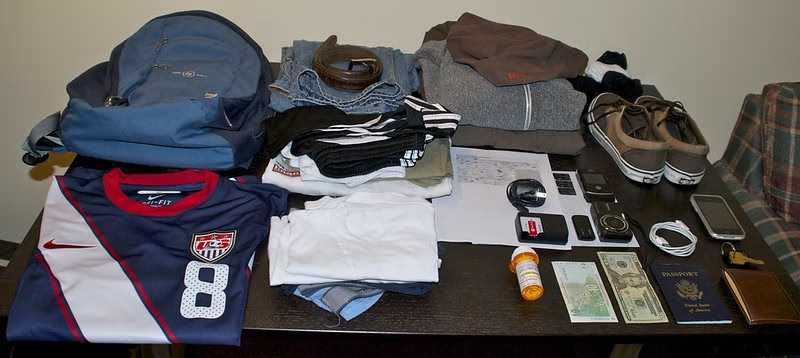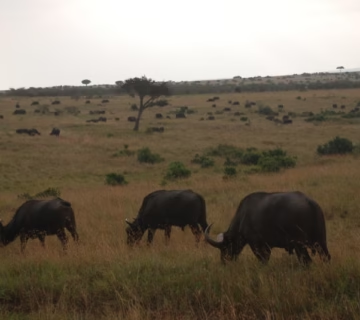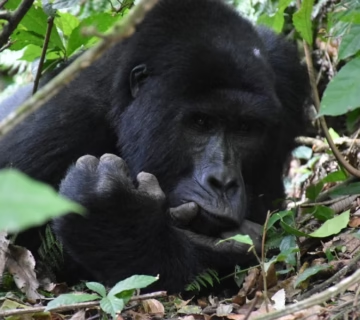Packing list for a Uganda Safari
The next step is to prepare your packing list for your trip to Uganda or Rwanda after you have booked, reserved, or confirmed your Uganda Rwanda safari with your tour consultant or travel agency, have your confirmed airline ticket, visa, and yellow fever vaccination, and are eager to embark on a once-in-a-lifetime adventure.
Depending on the aircraft you reserved for your safari, you will need to take into account the weight and dimensions of your bags while creating your packing list. If your airline allows you to bring a certain quantity of baggage and you are visiting more than two countries or staying for a longer period of time, you may want to discuss with your tour adviser storing some of the items you won’t need until the conclusion of your safari.
How much you enjoy your safari also depends on what you pack. Just picture the misery of discovering, miles into the wilderness, that you forgot to bring a camera charger or additional batteries. After that journey, all you will have are stories and recollections that fade with time and age. As a result, the following packing list will help you enjoy and know what to bring on your safari in Uganda or Rwanda.
Records and various objects
The first things you should pack for your safari in Uganda are your documents, which include your passport, airline ticket, yellow fever vaccination, Uganda safari itinerary, travel insurance documents, and, since 2019, every traveler must have a negative COVID 19 PCR test. You should also think about bringing an alternate form of identification in case your passport is lost, locks for your luggage, and a visa document for countries that require one.
For financial services, pack your Mastercard, Visa, or credit card; they go under miscellaneous things. You must have your money transaction cards with you whether you have paid for your trip or not, particularly if you dislike using cash when you travel. For any other items that guests may want to buy that are not included by their safari package price, the majority of urban hotels and national park lodges do have payment machines that accept credit cards.
In addition to having credit cards, you should also have some cash on hand since certain purchases may be made without a credit card. Carry all of your cash in US dollars (US$) alone to prevent currency-related hassles, since US dollars are the most widely accepted foreign currency in Uganda. In Uganda, you may readily swap your currencies at a number of currency exchange bureaus, including those for the British pound, the euro, and the East African shilling.
You may convert the foreign cash into Ugandan shillings, albeit the exchange rates are constantly changing. Your porter, rangers, driver-guide, hotel personnel, laundry, and sometimes souvenirs or any other road item you may need to buy while your Uganda safari are some of the things you may need to purchase or pay for using currency in Ugandan shillings.
Safari-friendly clothing
Aside from the mountainous regions, such as Mount Elgon, and the western parts of Uganda, particularly the Kigezi region and areas near Mount Rwenzori, which are covered in snow at the summit, Uganda has a warm tropical climate with temperatures between 25 and 29 degrees Celsius.
Although January, February, July, August, and December are Uganda’s warmest months, the country has cool nighttime temperatures of 16 to 18 degrees Celsius following the day’s heat. The majority of Uganda’s areas get 1,000 to 2,000 mm of rainfall annually; the months of March, April, May, September, and November often see the most intense rainfall.
Thus, the month you want to visit Uganda has a big impact on how much clothes you can bring. Light clothing is necessary in hot weather, whereas thick clothing is required in wet weather. However, the weather in Uganda is unpredictable at any time of year, so when you travel, pack light and warm clothing.
This is because some tourist destinations in Uganda, like Kidepo National Park in the country’s north, are always hot, even during the rainy season, while other places, like Bwindi Impenetrable National Park, are always cold. Colors that fit in with the surroundings, like brown, khaki, olive green, and other muted hues, are ideal for wildlife safari attire.
Bright colors tend to frighten animals away, while blue and black hues tend to attract mosquitoes and tsetse flies. Select fabric that dries more quickly, is simple to hand wash, and is not readily soiled. Given the rugged terrain of the Ugandan roads going to the national parks, a sports bra will be perfect for women.
In the event of a swimming trip or when lounging at your lodge in the evening, women and gentlemen alike should remember to bring their own changing undergarments and swimming suits. For instance, it is advised to wear long-sleeved shirts, gloves, long pants and socks to defend against bug bites, and a rain poncho whether going on a gorilla climb, woodland stroll, or any other hiking or trekking adventure.
However, since Uganda is not completely hot, it may be rather cold in the morning and evening, so it’s advisable to wear layers that you can take off or add as the temperature changes. It’s also useful to have a lightweight, waterproof jacket that fits in your daypack.
Take into consideration the cultural associations of Ugandan attire while preparing for a safari. Some cultural and religious sites, particularly those for women, require long sleeves and clothing that doesn’t expose a woman’s body. These include Uganda Mosques, Kasubi Royal Tombs, and Kabaka’s Palace, to name a few. These places are respectful of Ugandan communities and everyone is expected to dress appropriately.
Safari footwear that is comfortable
The most crucial part of your Uganda safari is bringing suitable shoes, depending on the activities you want to perform. It is OK to wear sandals whether you are exploring in a city or unwinding at your hotel or lodge.
However, at some cultural sites, like as shrines, sandals and shoes are prohibited in the areas designated for the ancestral gods. Comfortable, lightweight hiking and walking shoes are advised for animal safaris, nature walks, and easy treks while on a safari in Uganda. You should bring more durable footwear for activities like mountain climbing, chimpanzee trekking, and gorilla trekking in Uganda.
This is because hiking in Uganda requires you to go deep into muddy jungles, which is why hiking boots are essential. In order to prevent prickings while in the forest, it is also advised that you bring waterproof shoes made of materials that are simple to wash without becoming wet and shoes with tougher rubber bottoms.
Sun protection equipment
In Uganda, even though the mornings and nights are often cold, the sun’s rays may heat your head so much throughout the day that it impairs your vision. In addition to dressing in light or warm clothes according on the weather, sunglasses are a necessary item to bring on an African safari, especially in Uganda, so that you can adapt to the changing circumstances.
Among the various eye protection benefits of sunglasses is their ability to shield the eyes from the sun’s rays and wind, which may be particularly harmful during game drives. Additionally, don’t forget to bring sunscreen since it helps protect from the uncomfortable heat.
A wide-brimmed hat that is large enough to cover your head and one with strings that you tie under your chin to keep it from blowing off or falling off are other items you should bring to protect yourself from the hot sun. These hats can also be worn while hiking or trekking. Moisture drops are similar to sunglasses. Using moisturizers and lip balm can help keep your lips from drying out.
Safari devices or apparatus
What would an African safari be without technology and gear? Remember to bring devices that will help you save the memories of your safari in Africa. Beautiful sights in Uganda can only be described to others via visuals rather than words. While on safari, you will need certain useful tools to help you see further than your eyes can and to record priceless sights and sounds in pictures or films.
The extended range One of the greatest devices for a safari in Uganda is a camera; bring along a camera and charger with the finest lenses that provide crisp, clear photographs with precise focus and speed. It is just insufficient for a great experience, even if some people will only use their phone cameras to take pictures.
Another item that should always be on your packing list is a binocular. These devices allow you to see objects that are far away and inaccessible to the naked eye; for instance, they are ideal for those who are traveling to observe birds. In addition to your phone, bring your laptop, memory card, spare batteries and charger, a torch or a flash light for night vision in case you’re going on a night game drive. Additionally, as Uganda uses the same three-pin UK-style converter (electric plug), bring one with you. However, a convertible adapter is also advised.
Since most hotels and lodges have WIFI, it is crucial to have your cell phone with you on your Uganda safari so you can stay in contact with your friends and family back home. If you are the kind of person who enjoys sharing your safari adventures on social media while on the road, your smartphone, tablet, or iPad will be quite helpful.
You may get a Uganda local sim card, which needs your mobile phone to be unlocked, or use roaming, which is rather costly, to access the internet in Uganda. If there is a bad internet connection in certain places, you may still contact your tour operator via the local sim card line.
Toiletries
While certain toiletries are provided by Ugandan hotels and safari lodges, it is still advisable to bring your own, particularly for those staying at low-cost urban hotels or lodges or camping areas. Luxury lodges have ample toiletries for its visitors, so you may not think about bringing your own, but you should for your own protection if you want to use your own for reasons that are only known to you.
Wet wipes, which you may use to remove dust from your face or body before taking a full-fledged shower, are among the toiletry products you should bring.
Hotels and lodges do not include wet wipes. In addition to carrying your hair dryer, deodorant, brushes, blades, nail clippers, and several other personal hygiene supplies, ladies should bring their own tampons or pads, since the latter are more difficult to get in Uganda than pads. Keep your own toothbrush, toothpaste, body scrub, money bag, and any other amenities that you consider necessary. Lodges and motels provide laundry services, but often charge for them.
Health Kit
It is advised that you bring your own prescriptions, particularly if you are unwell, even if your host tour operator is required to supply a first aid kit. By avoiding or treating any unexpected aches and pains, your medical pack will help make your trip more convenient.
You must properly take your medicine as directed by your home doctor while traveling for chronic conditions like ulcers and asthma. Insect repellent, pain relievers, antibacterial creams, antiseptic wipes, cotton, elastic bandages, antimalarial pills, platers, tiny scissors, and condoms are a few things you should include in your medical kit.
A daypack
You must have a daypack with you when you go to Uganda. A day’s worth of supplies should fit in this backpack, including your packed lunch, water, a rain poncho, a journal that is kept dry and clean in a Ziploc bag, and a few essentials like wipes, sanitizer, and a flashlight. Make sure you don’t bring too many things that will make your day trip more difficult.
This daypack may be the same bag you bring with you when you travel; you should never let it leave your body or allow someone else to carry it for you. Typically, a day bag is needed for hiking, chimpanzee trekking, and gorilla trekking.
Charity-related items to help the local community
The majority of Ugandans still live in underdeveloped conditions in rural areas, and the presence of tourism in these regions has improved the quality of life for those who reside there. Carrying some charity products that may not be particularly useful to you is not required, but it is a way to help the communities who are more in need than you are.
One or two items, such as clothing, school supplies for school-age children, or even skills that will help the community make a livelihood, might transform the life of a community member if your safari schedule incorporates community-based activities.
In addition to distributing cash, offering goods will provide the community additional significant options. Giving back to the community that housed you during your safari will be accomplished via your gesture.


